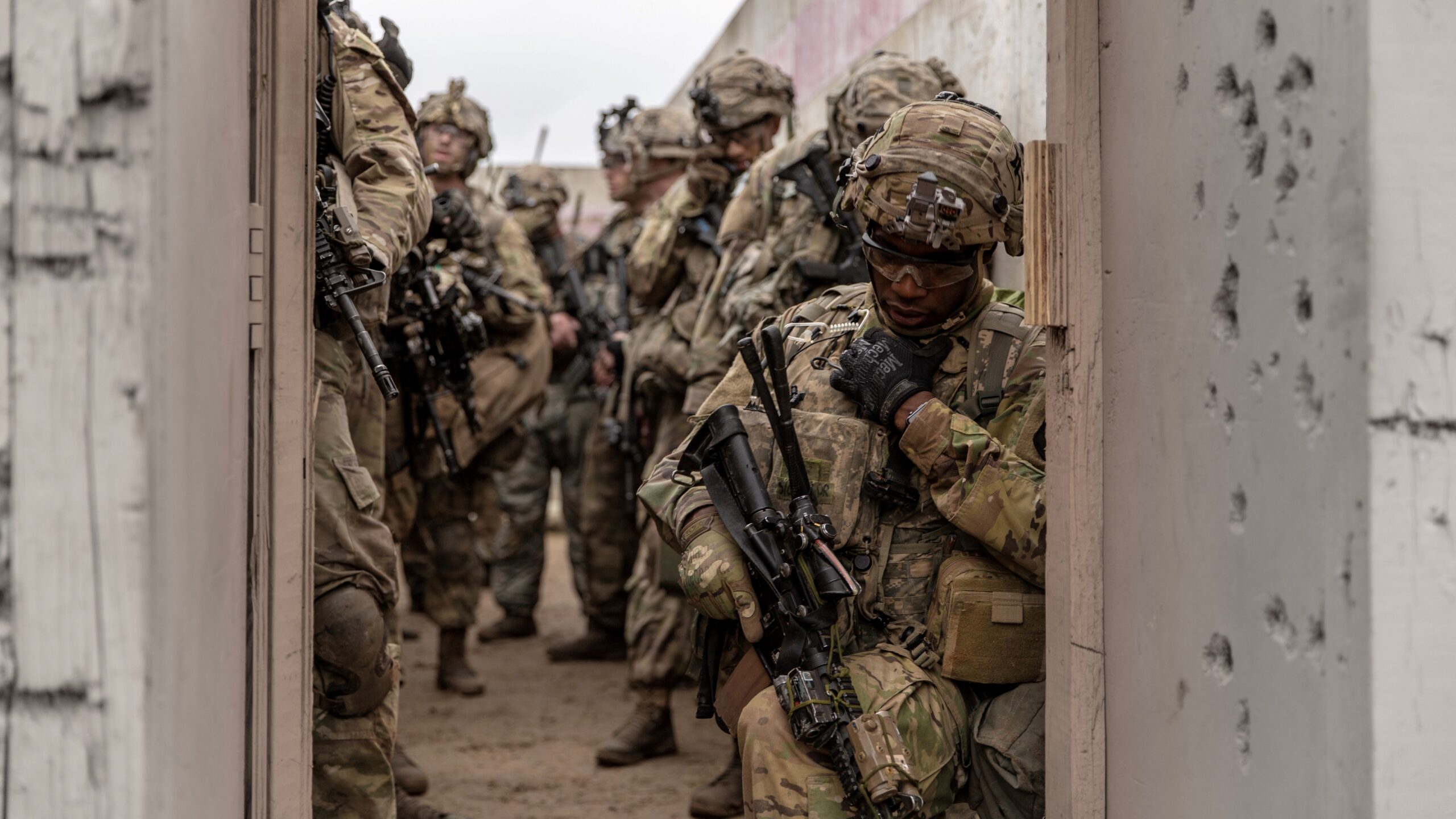
Communications capabilities are only going to grow more important in the era of JADC2. (U.S. Army Photo/Justin Wright)
WASHINGTON: Amidst the Pentagon’s push for Combined Joint All Domain Command and Control initiatives, Collins Aerospace recently teamed with the University of Iowa to run a series of exercises focused on resilient networking, intelligent sensing and secure autonomous processing.
The demonstration, which took place Dec. 9 and Dec. 14 at the University of Iowa, included over a dozen technologies integrated into a joint force use case at the tactical edge.
Data was securely exchanged over four live networks using systems combined on a surrogate Future Attack Reconnaissance Aircraft that separated target information to multiple security levels and provided data to real and simulated ground and air platforms, according to a Jan. 10 Collins Aerospace press release.
“Using surrogate FARA, Air Launched Effects (ALE) and Grey Eagle aircraft, the assets conducted a detect, identify, locate and report (DILR) mission on an active RF radar,” according to the press release. “The ALE identified and processed key target information using Collins’ RapidEdge Autonomy Mission system and transmitted collected data over a Tactical Targeting Networking Technology (TTNT) mesh network to the FARA and Grey Eagle.”
In a statement to Breaking Defense, a spokesperson from the Army’s Future Vertical Lift Cross-Functional Team said the service was “very pleased to see industry and academia invest their efforts in developing technologies supporting CJADC2 and Multi-Domain Operations.”
“It’s exciting to see Collins Aerospace, the University of Iowa, and others working on potential solutions for those critical elements of the FARA ecosystem that will provide the warfighter an asymmetrical advantage over our adversaries,” the spokesperson said.
RELATED: At Project Convergence, Army ‘struggling’ to see joint battlefield as it heeds ‘hard’ lessons
Several radios integral to the Army’s efforts to upgrade its tactical network were used in the demonstration, including PRC-162 Manpack and Trellisware TW-950 radios, which enabled third party and coalition interoperability. SPARTAN open systems radios were also used to transmit sensor imagery to a ground user.
Paul Mehney, a spokesperson for the service’s Network Cross-Functional Team’s Program Executive Office for Command, Control, Communications-Tactical said in a statement to Breaking Defense that the program office has been encouraged by holistic industry innovation supporting JADC2 sensor-to-shooter network design.
“Just in the last year, industry has showed great willingness to partner and bring forward new ideas driving toward agnostic transport, data centricity and network security and is actively helping to scope out capability set design that supports JADC2,” Mehney said. “Experimentation events such as Project Convergence, NetModX and others, continue to inform network design and provide the best lab and field based venues for industry to integrate technologies that may support future capability sets.”






















